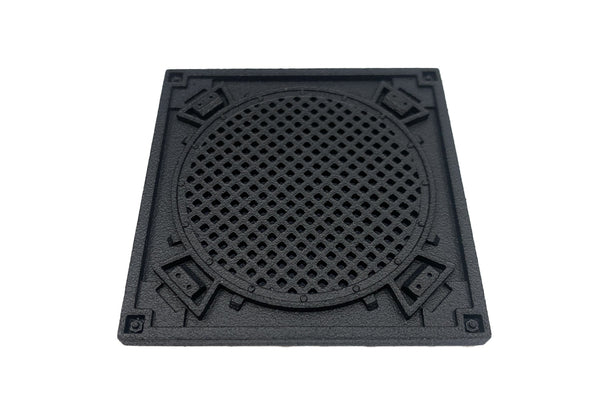HobbyBoss 1:35 German Pz. Kpfw. II Ausf. J (VK16.01) Early
83803
£23.00 GBP
The Panzer II tanks were produced from 1935 till 1943 and played an important role in the early years of WWII. By 1940-41 they were supplanted by the Panzer III's and Panzer IV's. The Pz.Kpfw.II was used during the Polish and French campaigns, in North Africa against the British, and on the Eastern Front against the Red Army.
The Panzer II Ausf. D, Ausf. E, Ausf. F and Ausf. L were designed as reconnaissance tanks. Continued development of the reconnaissance tank concept led to the much up-armored Ausf. J, which used the same concept as the Pz. Kpfw.I Ausf. F of the same period and had an experimental designation VK1601. This version had heavier armour, with protection brought up to 80mm on the front and 50mm on the sides and rear. With 25mm roof and floor plates, the Pz. Kpfw. II Ausf. J had a total weight of 18 tons. It was equipped with the same Maybach HL45P as the Pz. Kpfw.I Ausf. F, and its top speed was reduced to 31 km/h. Primary armament was the 2cm KwK38 L/55 gun.
22 of these tanks were produced between April and December 1942, and seven were issued to the 12th Panzer Division on the Eastern Front.
Item No: 83803
Item Name: German Pz. Kpfw. II Ausf. J (VK16.01)
Scale: 1:35
Item Type: Static kit
Model Dimensions: Length 124.6mm, Width 82.5mm
Total parts: 300+
Total Sprues: 10 sprues, upper hull and lower hull
Photo Etched Parts: 1 piece
Release Date: 2013-05
Additional:
- The kit consists of over 300 parts
- Multi-directional slide molded lower hull w/fine detail
- Photo-etched parts included
Related Items
Soviet Sniper WW2 1/16th scale
£45.00 GBP
Highly detailed 1/16th or 120mm scale miniature, capturing the uniform and equipment of a WW2 Soviet Sniper. The kit comes with three head configuration options, fur hat with ear flaps known as the 'Ushanka', a head with helmet (2 parts) and a head with a cap known as the 'Pilotka'.
This is ideal for a diorama or bust depicting Soviet Snipers such as Vasily Grigoryevich Zaitsev. Between 10 October 1942 and 17 December 1942, during the Battle of Stalingrad, he killed 225 enemy soldiers. Zaitsev became a celebrated figure during the war and later a Hero of the Soviet Union, and he remains lauded for his skills as a sniper.
Operation Frankton RMBPD Set - WWII Cockle Canoe + Royal Marines
£45.00 GBP
1:35 - Major Herbert George "Blondie" Hasler - Resin kit
Herbert George "Blondie" Hasler was a Lieutenant Colonel of the Royal Marines. In 1942, a 28-year-old Hasler planned and led Operation Frankton. The operation was a commando raid on Axis shipping in the French port of Bordeaux occupied by the Germans. The mission was to attach mines to the hulls of German cargo ships. Three of the five canoes were lost on the way to the port. The surviving crewmen including Hasler reached the port successfully, placed the mines and managed to drown four cargo ships. They then walked 100 miles to a French village where they met with members of the Resistance and started their journey back to England through Spain and Gibraltar. For this operation Hasler was awarded the Distinguished Service Order by King George VI.
One kayak was damaged while being deployed from the submarine, and it and its crew therefore could not take part in the mission. Only two of the 10 men who launched from the submarine survived the raid: Hasler, and his number two in the kayak, Bill Sparks. Of the other eight, six were executed by the Germans and two died from hypothermia.
This product is available in two scales, 1:35 and 1:24 and was painstakingly designed from scratch as a digital model.
The kit includes: 2 x miniatures (Blondie Hasler and Bill Sparks) in their folding Cockle Canoe named 'Catfish' made by Campaign Models (UK).
Now available, while stocks last.
Miniature Diorama Display Base
£9.50 GBP
This highly detailed Diorama base is ideal for mounting one or two figures on display. Small enough to be displayed easily, big enough to provide enough space to set the scene. More styles coming very soon!
Dimensions: 58mm x 58mm x 4mm
1:35 Resin Miniature WWII German Soldier Eastern Front
£15.00 GBP
A detailed single (1x) resin miniature in 1:35 scale, posed to be standing while smoking a cigarette. The kit consists of the following parts:
Head/torso
Helmet
Right arm with MP40
Left arm/hand
Left leg
Right leg
M1931 Bread Bag - with M1931 Field Flask and Mess tin combined
Ammunition Pouch
Spare MP40
Sidearm in holster























